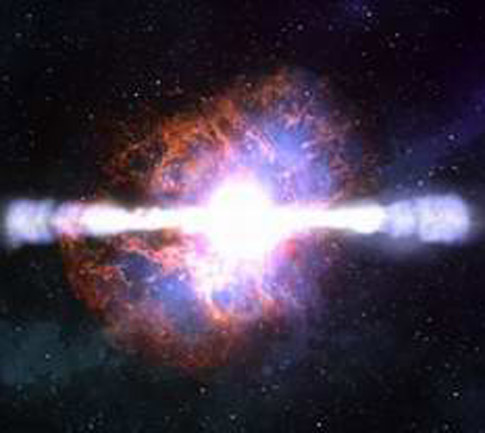|
It's the Astronomy Online non-Blog, or un-Blog.
Everyone has a blog now and since I am no follower of trends, I decided to merge the blog with the website. And I don't want to neglect the website in favor of posting on the blog.
These are the pages that were on the blog of old:
- Home
- Archive (Index of Pages)
- Me
- Current Trends
- Links
- Soho Live
Links:
Google Maps - Mars
Google Maps - Moon
HiRISE
HiRISE - MRO Imaging
Mac Singularity
Meade4M
Slackerpedia Galactica
Software for the Mac
Starry Night Online
Venus Maps
More Favorites:


































Thank you for visiting!
|
|
 |
|
Possible Image of a Black Hole:
By nature, a black hole is an object that cannot be seen. Because of extreme gravitational interactions with matter and energy, once anything crosses the event horizon of a black hole, it is lost to the black hole. The only evidence astronomers have to the existence of the rather enigmatic objects are the super heated material forming around the object in a disk shape called an accretion disk. This is so hot that the object emanates strong X-ray emission. A super-massive black hole has been thought to exist at the heart of our (and every other) galaxy.

An international team of astrophysicists including Volker Beckmann of UMBC/NASA-Goddard has discovered a possible new black hole near the center of the Milky Way galaxy.
The previously unknown black hole surprised scientists by suddenly "switching on," emitting strong pulses of radiation as it began consuming gas from the star it orbits over 26,000 light years away from our solar system. The discovery, detailed in a letter published in the Journal of Astronomy & Astrophysics, was made using NASA and European Space Agency (ESA) satellites.
In an ESA press release, Roland Walter, an astronomer at the ESA's INTEGRAL Science Data Center and lead author of the research results said, "The galactic center is one of the most exciting regions for gamma ray astronomy because there are so many potential gamma-ray sources."
Beckmann, a research assistant professor at UMBC's Joint Center for Astrophysics and NASA's Goddard Space Flight Center, was part of the team who used NASA's Swift satellite and ESA's INTEGRAL satellite to spot the tell-tale gamma-ray outburst. The research team includes scientists from Switzerland, France, Belgium, Poland, the United States and Spain.
According to Beckmann, potential new black holes are scarcer than commonly thought. "We know about 10 stellar systems in which we're pretty sure that there's a black hole involved, and 10 more are good candidates," he said. "What really surprised us was the intensity of the radiation it emitted and how quickly it became an obvious black hole candidate."
The team found that the black hole's unusually strong gravitational pull ripped off layers of the star it orbits, drawing them into its maelstrom. "We're not sure why this black hole is letting off occasional bright outbursts of radiation instead of a steady stream," said Beckmann, "But we suspect these powerful emissions are caused by big chunks of the star's matter falling into the black hole."
"This detection was possible because of the capability of NASA's Swift satellite to respond quickly to new objects showing up in the sky," said Neil Gehrels, chief of NASA/Goddard's Astroparticle Physics Laboratory and leader of the Swift satellite team.
The possible new black hole has drawn the attention of the international astronomy community, having been viewed by all major X-ray telescopes in space including: NASA's Chandra telescope, the Japanese JAXA and NASA collaboration Suzaku and the ESA's XMM-Newton X-ray satellite.
Credit: Astronomy Magazine
Additional Links:
Black Holes
Black Holes - Part 2
Next Post | Previous Post | Back to Top
|
|

